6 Reasons NOT to Buy an Electric Kitchen Composter
Wondering if you should buy a Lomi kitchen composter, a Vitamix FoodCycler electric composter or any other kitchen composting appliance to compost your food scraps at home? Read on for more information about these supposedly sustainable kitchen appliances and if an electric composter might make sense for you.
Update: Looking for a better electric compost bin? I found one I like. I’ve tried several electric kitchen bins, and this one is my favorite! Check it out.
This post contains affiliate links.
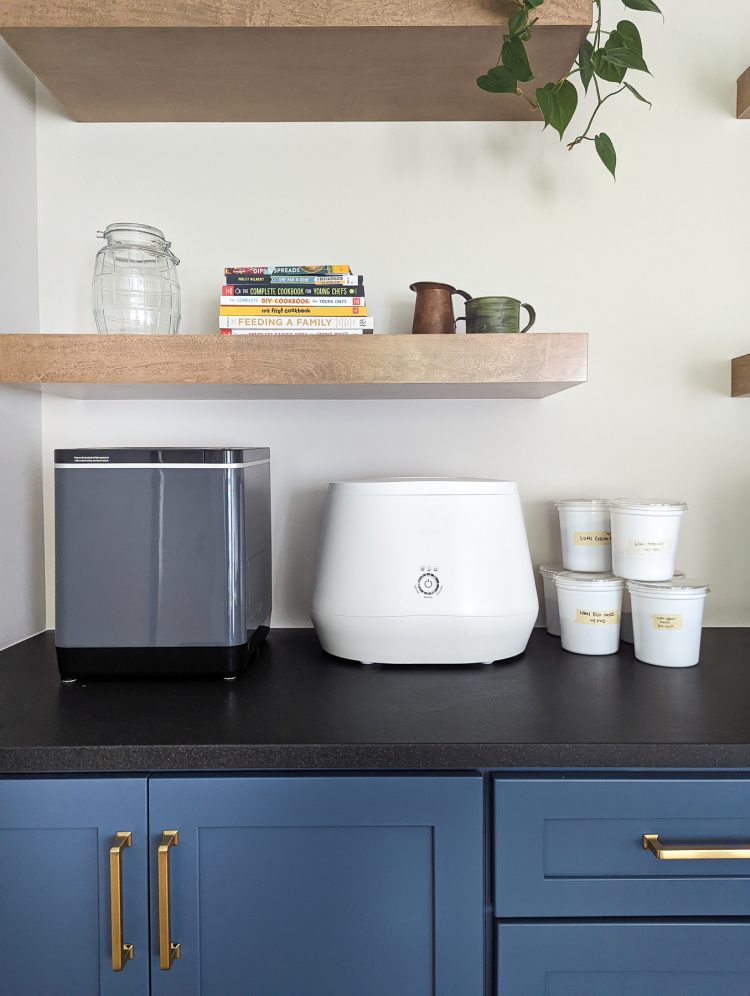
Let’s jump to the chase. Should you buy an electric kitchen composter? Probably not. I’m sure there are a handful of people who will find it particularly useful and worth their investment. But for the majority of people, an electric kitchen composter is a waste of money, more greenwashed than green, and is not the best way to compost at home. In many ways, I think they’re akin to glorified trash compactors.
How I tested kitchen composters
Once upon a time, I bought a FoodCycler FC-50. A few months later I bought a Lomi machine through crowdfunding that arrived at my house approximately 13,728 days later (maybe not that many, but it felt like it). I kept both of these electric composters for more than a year, And after testing them for several months to judge their usefulness and environmental benefits, I literally never used them.
Even though I had both of these kitchen composters, I would never recommend someone buy both of them. While they might each claim to have some unique qualities, they’re basically the same thing. Please don’t believe the hype that one should replace the other. I bought them both specifically so I could try them out, use each of them, and compare them in an informed manner for the blog.
Over the last couple of years, I’ve gotten SO many questions about whether or not it’s worth it to buy a Lomi or a FoodCycler (or the latest version of the trending electric composting solution), which one is better, and how they work. More recently, I’ve received questions about a Mill membership as well. In all cases, tech investors seem to hope to capitalize on growing sustainable living trends and continue to iterate on a product (the kitchen composter) that’s just not a good food waste solution for the masses.
More reasons not to buy an electric composter
I had grand plans to write a comprehensive review of the Lomi. I already wrote a review of the Vitamix FoodCycler. I’ve also taken a dive into the carbon emissions from running the machine to consider one reason why an electronic compost machine may or may not be worth it. I ended up not writing a full review of the Lomi and wrote this post instead. I truly don’t believe kitchen composters make sense for most people, and I don’t want people spending hundreds of dollars on a greenwashed product they won’t really use.
Furthermore, I’ve shared all the ways you can (or cannot) use Lomi dirt or FoodCycler Foodilizer. Take a peek at the post and you’ll quickly see I’m not a huge fan.
If you’re contemplating an investment in an electric kitchen composter, there are several things to consider before spending money on this supposedly eco-friendly kitchen appliance. Let’s break it down (see what I did there). 😉 We will start with two common questions and dive into more detail about reasons not to buy a kitchen composter below.
Does a kitchen composter work?
It depends on how you define “work”. The Lomi and FoodCycler both functioned well for the most part, in a very literal sense. They dehydrated and ground up food waste into… dehydrated food grinds (big surprise). So they technically work.
But do they compost? No. Electric composters don’t actually compost food waste. More on this below about using the output from kitchen composters.
Is an electric kitchen composter worth it?
Quick answer: probably not.
I think nearly all people will be best off saving their money and not making this large financial expenditure that is also pretty large itself. (It takes up a seriously solid amount of counter space, especially for something designed with apartment dwellers in mind.)
6 Reasons Not To Buy an Electric Composter
I’m sure there will be a handful of people for whom an electric composter makes sense. I’d be silly to suggest I know with certainty that no one should buy it. But I do think the ideal audience is pretty small. Before you spend your money, consider these 5 reasons not to buy an electric composter.
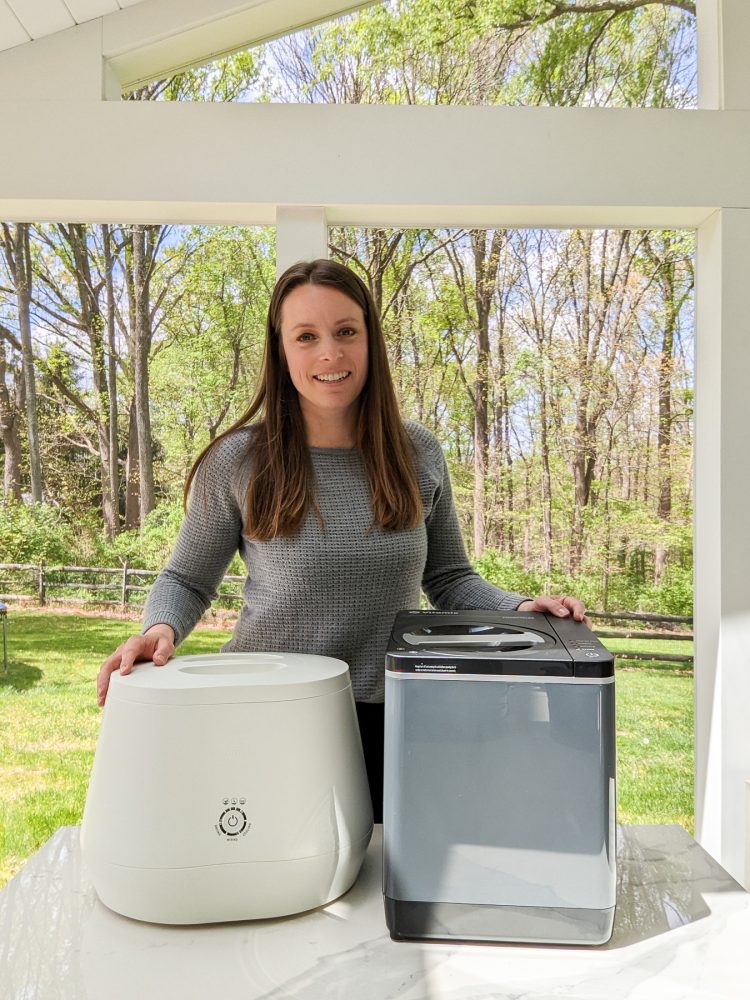
1. It’s Hard To Use the Output from Kitchen Composters
On the surface, the story of electric composting sounds quite appealing. We imagine sprinkling the “finished compost” on houseplants and vegetable gardens. Doesn’t it sound romantic?
But this isn’t how it actually works. The output from electric composters like the Lomi and the Vitamix FoodCycler isn’t actually finished compost. For the most part, it is dried-out, ground-up food scraps.
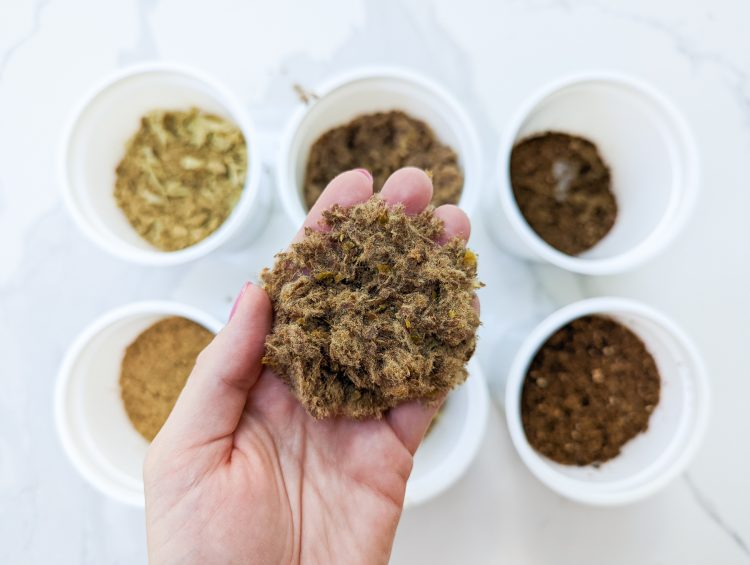
Vitamix FoodCycler Foodilizer
The FoodCycler is pretty forthcoming about the finished product. The company discloses that the output, called Foodilizer, needs to rest in bare soil for several weeks before adding around plants to be effective. Essentially, the microbes in the soil need to “compost” (i.e. process and digest) the dried-out, ground-up food scraps before they become soil nutrients, much like the process of regular composting.
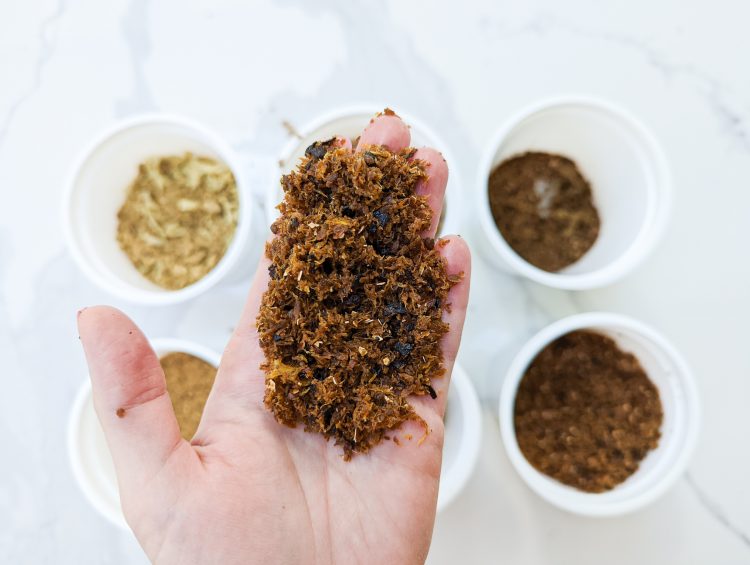
Lomi “Compost”
The Lomi kitchen composter claims to create a finished compost equivalent when you use their LomiPods (at least this is how I interpret their messaging). I made several batches of finished products from the Lomi with and without the LomiPods. The LomiPods make something more similar-ish to finished compost, but it’s a far cry from the nutrient-rich soil amendment that’s the output of well-managed composting.
Mill Food Grinds
The Mill (and its corresponding membership), one of the newest additions to the greenwashed kitchen composter market I’ve seen, does not even call the product a composter. They call it a “kitchen bin” though it’s marketed as a food waste solution to serve the same effective purpose as other kitchen composters.
I credit them with the transparency of language; none of these machines are actually composting anything. And they’ve recognized that the output is useless enough to customers that they chose to set up their offering as a service to ship the food grinds to chicken farms. Let me reiterate – the product/service is built around the assumption that customers don’t actually use the output from the machine. I’m not the only one who thinks using the output is generally unrealistic.
Further, the fact that they think shipping our household food waste through the mail to chicken farmers around the country is the “optimal environmental solution” for this output should be a good indication that it’s really hard for most everyday people to use it in any meaningful way.
Electric Composter Output Needs Time To Cure
No matter which of these electric composters you use, outputs need some time to cure in bare soil. Lomi might dispute this but I don’t believe them. Just look at the finished products.
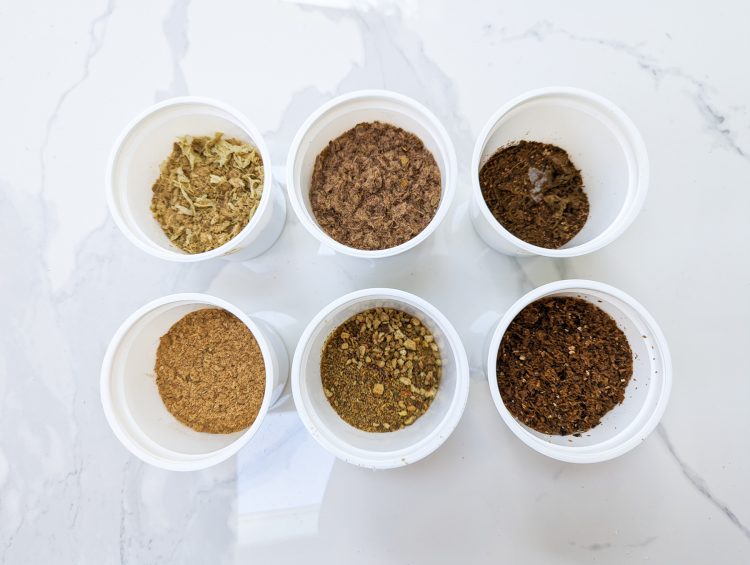
Electric Composter Output is Not Compost or Soil Amendment
Do you really intend to sprinkle any of those on your everyday houseplants? Surely these outputs have some nutrients in them that eventually could benefit the soil, but it’s not a simple one-step process to actually use the output from electric composters.
Furthermore, these all still smell like food. A scratch-and-sniff screen would be great right now, but alas, our internet technology isn’t quite that advanced yet. And if you’re “composting” something stinky (like tuna fish leftovers) in these bins, which I’ve done, there is still a very distinct smell to the scraps.
My tuna fish Lomi grounds smelled like fish (shocking, I know…). Believe me when I tell you that these each have a slight odor, at best, that I don’t think would bode well sitting on top of indoor houseplant soil. (More on the smells below and how they attracted raccoons to my garden.)
Most People Can’t Use the Output from the Kitchen Composters
Even if people can use it on houseplants or gardens (if they have a space for it to cure), how much do they really need? At some point, haven’t they “fertilized” everything enough for a while? Those who have large gardens could likely use all the output. But if you have a large garden, there are far better ways to compost than using a low-volume processing machine in your home.
I’ve seen some urban gardeners tout the benefits, and maybe one could make a case for some urban gardeners using this machine because they can’t process all their compost in their limited space. But you’d need many raised beds (I’d guess at least a half dozen or more) to use up a year’s worth of food grinds replenishing your bare soil each season between crops.
I’ve asked several people who have these machines how they use the output. Very few people have great answers. There are far more stories that end with “well… sometimes I compost it but sometimes, I guess I just throw it in the trash… because I’m not really sure what to do with it.”
I shared an entire post on all the ways to use Lomi “compost” (which also applies to FoodCycler Foodilizer) and then explained why I think most of them are silly or pointless. Definitely check out that full post to figure out how you’d actually use the electric composter finished product – regularly and sustainably – before buying a Lomi, a FoodCycler, or any other electric composter.
I think most people won’t actually do anything with the finished product except toss it in a green bin, a compost pile, or a trash bin most of the time. This is precisely where the food scraps would likely end up anyway without being processed by the electric composter.
And if that’s the case, what’s the point of buying the thing, letting the thing take up space in your home, using energy to run the thing, and eventually disposing of the thing when it doesn’t actually have a large impact on where food waste ends up?
This is my biggest criticism of electric composters. When we don’t actually put the end product to good use or the machine doesn’t materially change the waste stream, it’s not worth the money or the resources used to make and run the machine.
Beyond this, most people don’t really need any more reasons not to buy the Lomi, the FoodCycler, or any other electric composter. But for those who may actually use the finished product in a useful way that they don’t have access to without the machine, here are some other reasons to consider that might further give you pause before investing in these supposedly eco-friendly appliances.
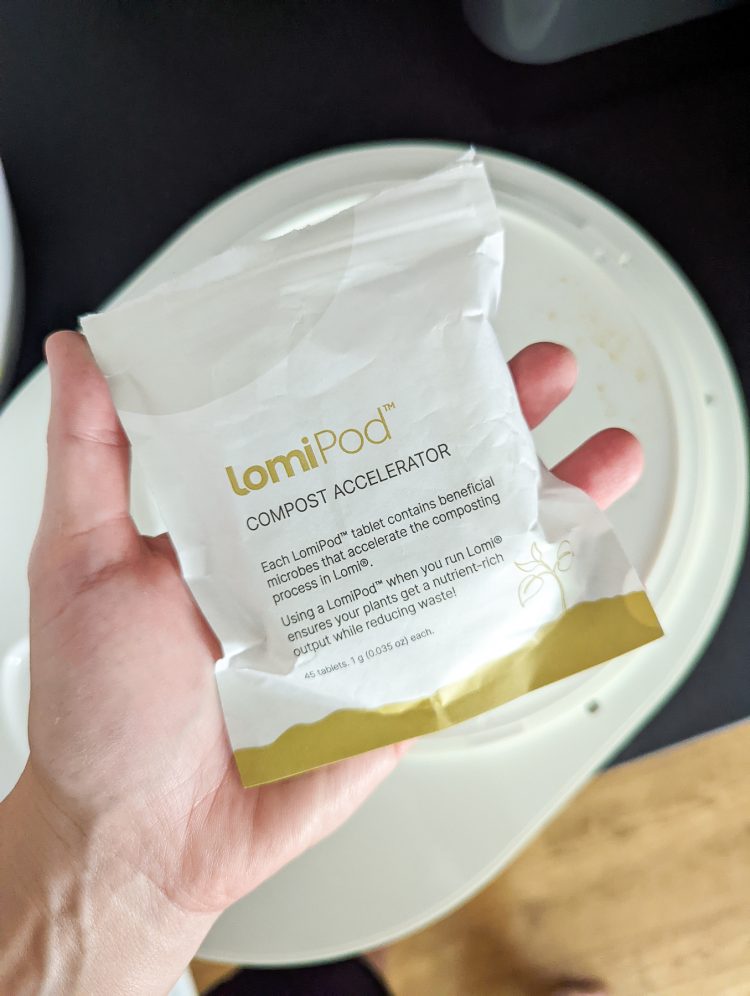
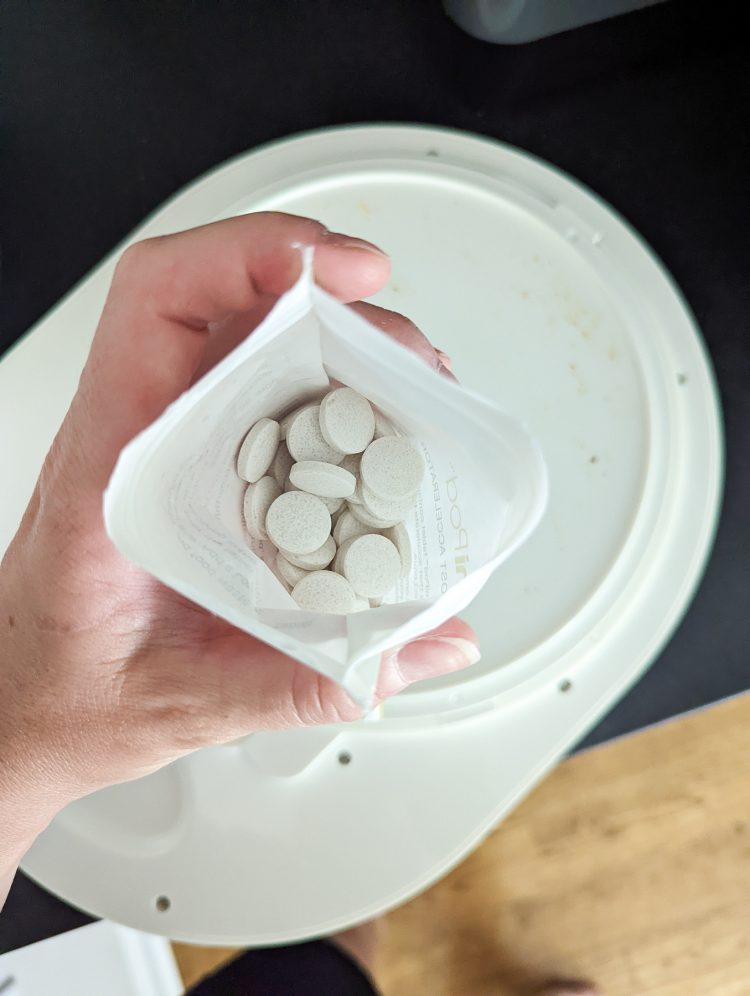
2. Electric Composters are Expensive
The Lomi, the FoodCycler, and the Mill membership are all pretty expensive. At the time of this post, the Lomi cost $500 while the FoodCycler costs $400. That price is not accessible for most people. I know Lomi and FoodCycler are not necessities and will have certain audiences who can afford the machines. But even if you can afford one of them, I think there are other options that are better.
The Mill membership is arguably more expensive because you pay for it forever (or as long as you subscribe). At $33/month (the price at the time of this post), it will take many months to equal the upfront cost of a Lomi or FoodCycler. But it’s more expensive in the long run if it was a viable sustainable solution. Spoiler Alert: I don’t think it is.
… and there are much better options for those who can afford it
I went into greater detail in my review of the FoodCycler FC-50. But in short, a curbside compost pickup service is available in many urban and suburban areas. A service is much easier to use, more effective, and will take years to equal the cost of either machine.
If you have a neighbor who composts, ask to drop your scraps in their bin. They’ll probably say yes. And if you have a bit of space, I’d choose a Subpod or traditional compost bin like the SoilSaver over an electric composter in most instances.
Related Reading: Top 5 Easiest Ways To Compost At Home
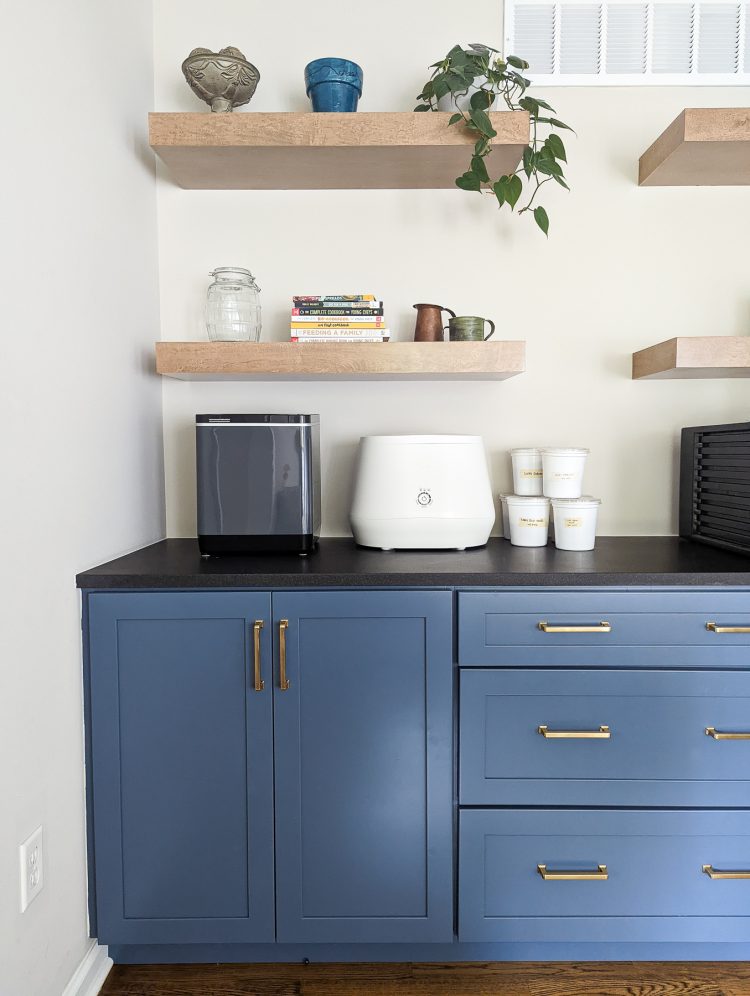
3. Electric Composters Take Up a Lot of Space
Both the FoodCycler and the Lomi take up a substantial amount of counter space. I didn’t keep either in our kitchen for this reason. Electric composters can theoretically be for anyone, but they seem to be marketed to and designed particularly for people who don’t have outdoor space to compost themselves.
Given the footprint of kitchen composters, I definitely don’t think they’re a great option for people living in apartments or other small spaces. We’ve lived in apartments in Philadelphia and Chicago. In both cases, I would not have had space for an electric composter in my home.
4. Electric Composters are Kind of Noisy
The Lomi and FoodCycler both run for several hours; usually between 4 and 8 hours per cycle depending on the mode that you use. Both have a noticeable humming motor sound that’s pretty annoying, especially if you live in a small space or have to stay near the machine while it’s running. Some of the Lomi modes are especially loud.
The Lomi site has compared the “quiet sound” of the machine to the humming of your fridge or your dishwasher. At least in my experience, this is just flat-out false. When it’s running, it’s much louder than any fridge I’ve ever owned. They ever refer to “Some cracking and grinding noises are totally normal for Lomi. Lomi may even squeak if you’ve added coffee grounds or eggshells.” I’ve heard those noises, and they are not quieter than my fridge or dishwasher.
When I run it, I make sure it’s in a room that we aren’t using. If you’re a light sleeper, you also may not want to run it overnight if it’s in a room near where you sleep. When I used to run it at night, my husband would mention how it bothered him when he tried to fall asleep, even though it was in the next room over.
I haven’t used other kitchen composters, so I can’t say from personal experience how loud they are. But in all cases, they have to run a small motor to dehydrate and grind up the food scraps. They probably make similar amounts of noise.
5. Kitchen Compost Food Grinds Still Smell Enough To Attract Animals
Some people have asked me if an electric composter might help people compost in bear country. I don’t live in bear country, but I know that these food grinds still have a faint food odor and bears have a keen sense of smell.
Depending on what you process, the smell may be pretty strong. I composted some leftover fish scraps in the Lomi, and it smelled very much like fish after going through the machine. I would bet bears would still smell these scraps and expect food (unless you thoroughly buried them).
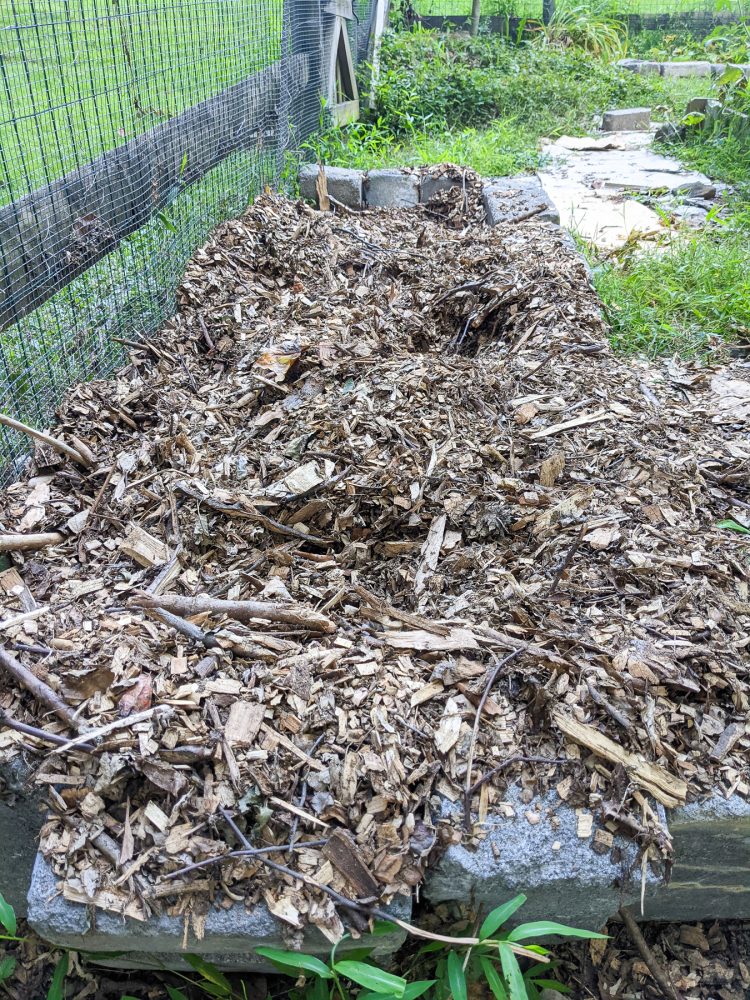
At one point, I sprinkled Foodilizer under mulch in my garden. The very next morning, I found a mess of mulch that had certainly been the victim of a voracious raccoon following its nose. Raccoons were common visitors to my compost bin until I locked them, so I wasn’t surprised by the mess. But if raccoons smell the scent and assume it’s good, I suspect bears will do the same. In short, electric composter processing probably doesn’t ease the complexity of composting in bear country.
And even if you don’t live in bear country, you’ve probably got sly raccoons who will be plenty curious if you don’t adequately bury the dried and ground food scraps.
6. They’re more tedious to manage than you’d expect
Someone is going to tell me they have an electric composter and it’s not hard to manage. But I beg to differ, and here’s why:
- As you’re filling up the bucket, you need to be aware of the contents you’re inputting. Did you chop up big pieces so they don’t get caught in the grinder? Do you have too much sugar or fibrous material? If you’re using a Lomi, which mode do you plan to run? Are you including bioplastics? Do you have Lomi Pods on hand? Are you running Grow Mode, so the bioplastics should go into the trash for this cycle or be stored for later?
- Every day or two (especially if your home has more than one or two people), you need to run it. Are you running it when the noise won’t be an issue? What will you do with the scraps you create while it’s running?
- Once it’s done processing, where will you store the scraps?
- And maybe I’m being a baby, but cleaning it is kind of a pain, especially when food grinds get stuck in the grinder (which happens pretty regularly).
None of these steps are that hard, but they’re also not as easy as other methods of composting I’ve used. If they will work for you, that’s great. But it’s just worth noting that it’s not the easy peasy magic solution some of the electric composting marketing implies (at least to me).
The Final Verdict: Is an electric kitchen composter worth it?
I don’t think so. I just can’t recommend that someone buy an electric composter. I’m a composting nerd. I’ve tried composting in a SoilSaver compost bin (my very favorite outdoor compost bin), an open compost bin, a compost tumbler, and a chicken wire enclosure. I own a Subpod. I even started and sold my own curbside composting service.
Having tried all of these composting methods, the electric composter is my absolute least favorite. It might be an unpopular opinion, but electric composters aren’t the future of food waste.
Deinfluencing doesn’t pay
One last thing to note about electric composters and who you see promoting them – Most of the electric composter companies (definitely Lomi and FoodCycler) have pretty solid affiliate programs and establish paid partnerships with content creators and media companies to promote their products.
That means that when you buy one of those expensive products through one of the links they share on their website or social media, they make a decent commission. Influencers (including me) – and media companies! – have financial incentives to encourage you to purchase these machines because they get paid when you do.
Deinfluencing, on the other hand, isn’t that lucrative. I don’t see handsome paychecks for buying these machines with my own money (they were not gifted to me), using them for months, and then spending hours writing up reviews telling you NOT to buy them. But as I used these machines more and saw others contemplating them as well, it became abundantly clear to me that they just aren’t great investments for most people. And I can’t, in good faith, tell you otherwise.
All that is to say that some of the other people telling you they love the machines may be telling the truth. They might truly love electric composters, and they might have good uses for the output. But when you dive into most of the articles (at least the ones I’ve read so far), most of them don’t really dig that deep – they don’t offer many critiques beyond a surface-level approval of a shiny new product.
- Most don’t tell you how they actually manage the process (presumably because it’s more tedious than the companies want you to believe). It’s not that hard, but it’s more annoying than many of the reviews let on.
- Most don’t tell you what they actually do with the output (and dear friend, they are not simply sprinkling it all on their houseplants – if they tell you that, they are lying).
- Most don’t compare to other composting alternatives available to them with respect to cost, convenience, and environmental costs and benefits.
- Most don’t show you how they have to store the output somewhere for months before they can put it in their garden each spring or fall – and this takes up a good bit of space, especially for apartment dwellers (if they have a garden).
So before you invest hundreds of dollars into a kitchen compost machine, do your research. Think about whether you’ll really make the most use of it and if it’s the best option available for you. Consider the incentives of the people recommending it to you, and how deep their glowing reviews or constructive criticism are. I’m not saying they’re wrong or dishonest or that an electric composter isn’t right for you. I’m just suggesting you be particularly critical before investing.
Do you have an electric kitchen composter? Do you use it regularly? I’d love to know how you like it and how you use the output. Was it a worthwhile investment? Let me know in the comments.
If You Like Posts About Electric Composters, You Might Also Like
9 Ways To Use Lomi Dirt… Or Not? (I’m Skeptical)
9 Types of Free Compost Browns | The Simplest Fix For Slow and Slimy Compost Bins
An Unpaid Review of the Vitamix FoodCycler FC-50
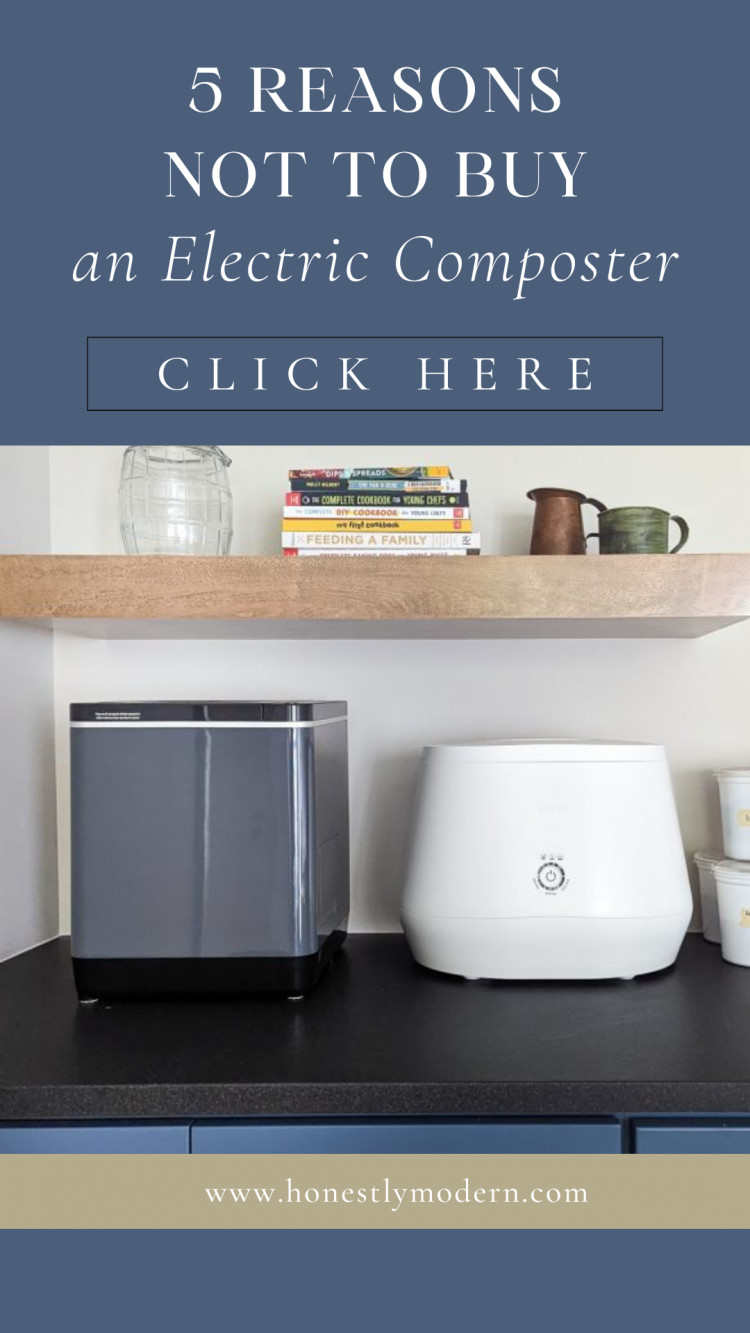

Jen Panaro
Jen Panaro, founder and editor-in-chief of Honestly Modern, is a self-proclaimed composting nerd and advocate for sustainable living for modern families. To find her latest work, subscribe to her newsletter, Stepping Stones.
In her spare time, she’s a serial library book borrower, a messy gardener, and a mom of two boys who spends a lot of time in hockey rinks and on baseball fields.
You can find more of her work at Raising Global Kidizens, an online space to help parents and caregivers raise the next generation of responsible global citizens.

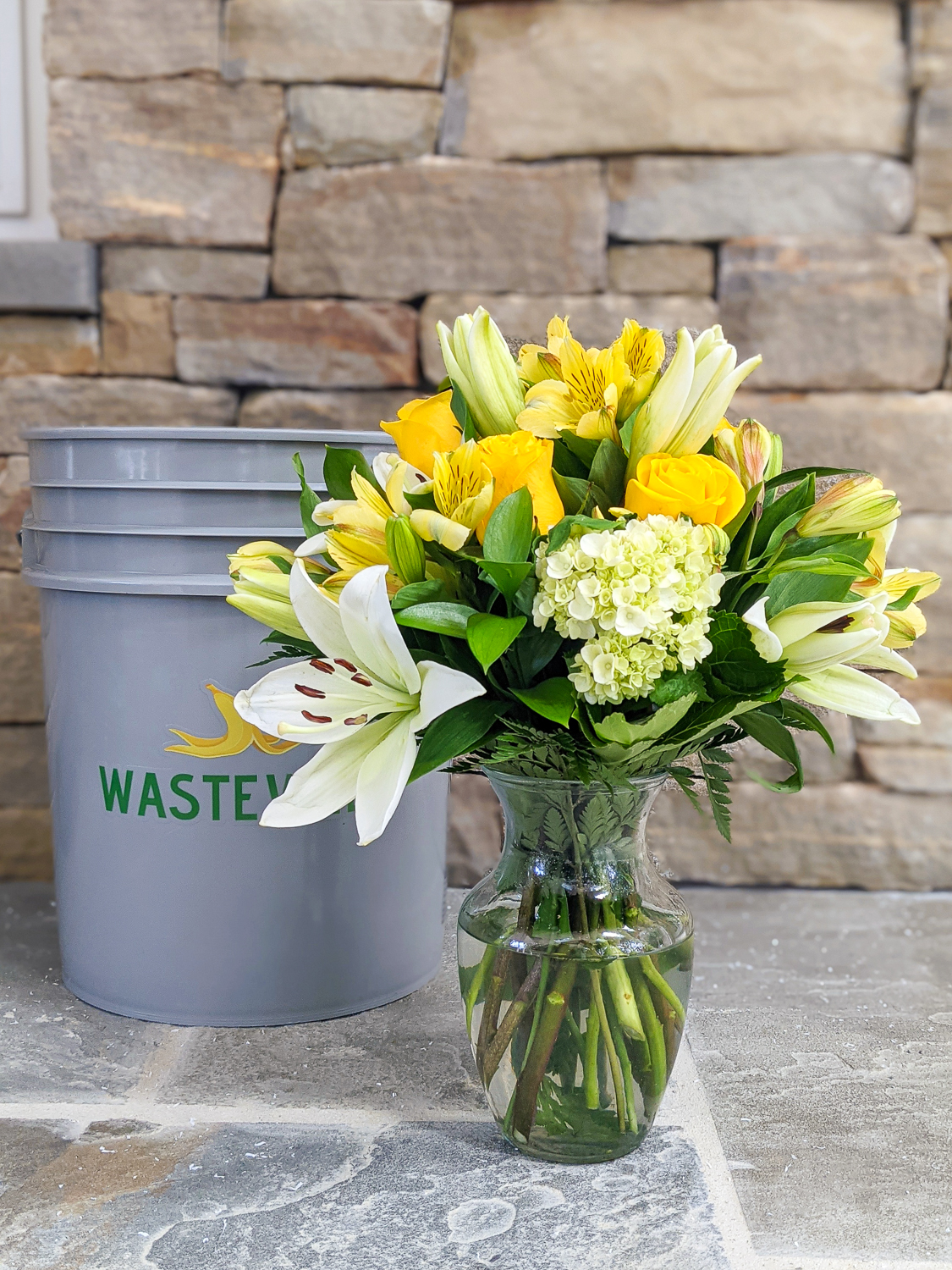
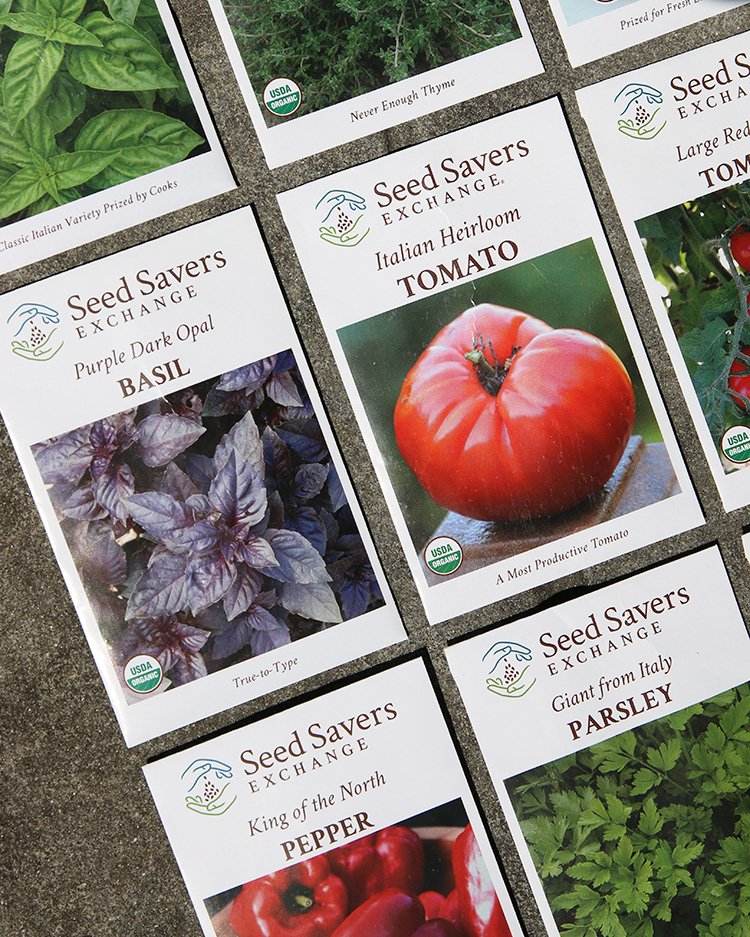
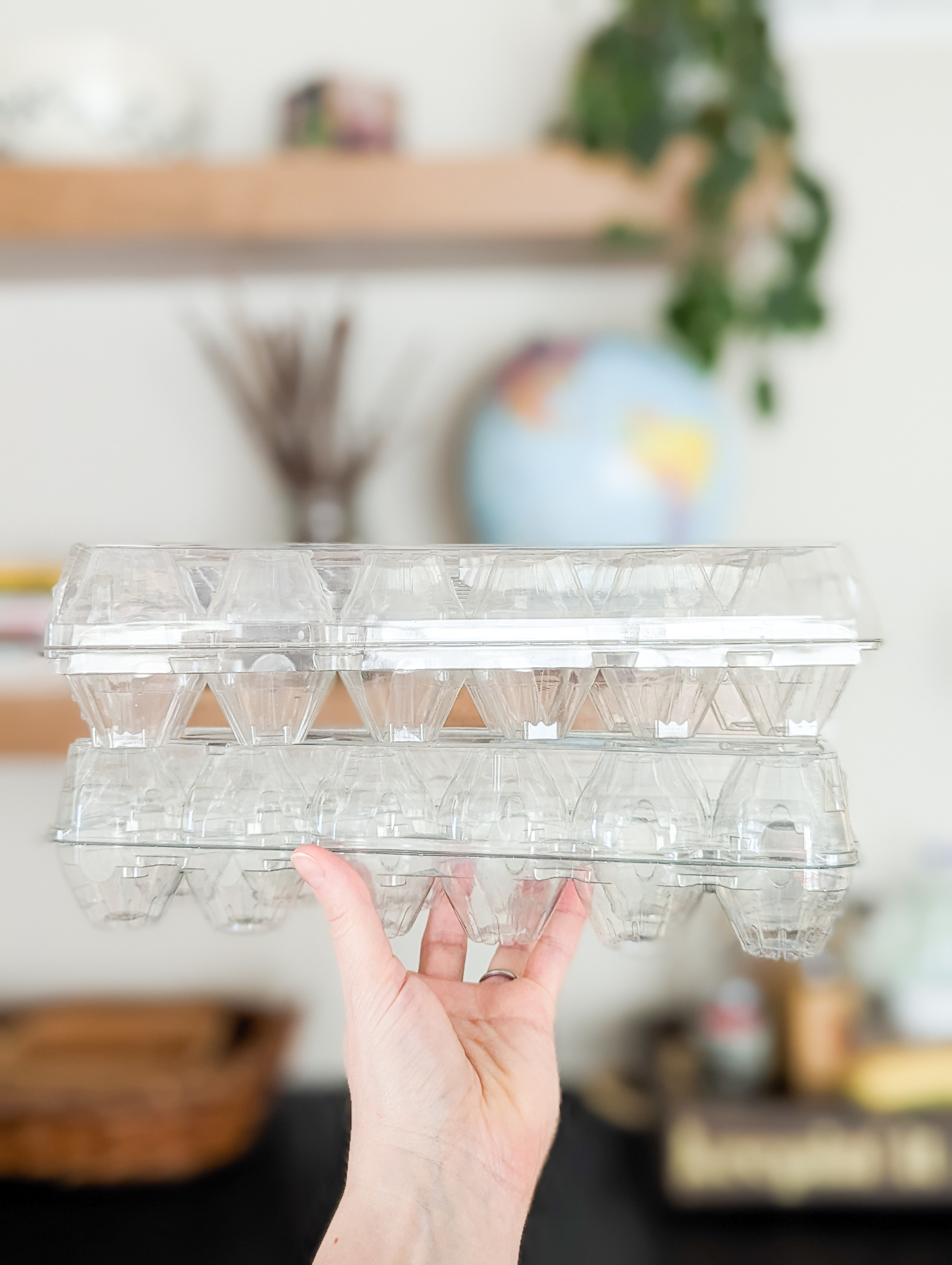




This article is so helpful. I was literally trying to talk my husband into a Lomi last night, but after reading this, I agree that it’s not right for our home (in bear country).
So glad you found it helpful! 🙂
I live in bear country and love my machine. Our county sold these at a discount for a pilot program trying to keep food waste out of the garbage. Or atleast reduce it. And that it does. We have a large family with lots of veggie scraps. A full bucket reduces down to about a cup of dirt like substance as you know. I tried many composting methods before this and I was so sick of fruit flys or leaking bins or bags breaking as you removed them. I tried outdoor tumblers and containers. Because of our climate, I was told it was not getting the containers warm enough to help process the waste into compost. And most of our outdoor bins attracted animals too.
So I guess I’m one of the few that love my machine, but I wouldn’t say I am wealthy or haven’t done a lot of other forms before I went to this method. Plus I love not having the smell of an outdoor composter. Even our closed tumble stunk because the food sat in there too long without breaking down. I will take the lightly scented “dirt like” leftovers any day. We use our 5L machine daily. I’m glad I am helping keep waste out of our landfills. I don’t always have to get something in return (like instantly ready dirt) to do my part. Plus if I throw my processed grounds outside you don’t see them. They look natural. I can’t say that about the pile of food scraps in a bin.
Thank you for testing items and giving your opinions. I wanted to let you know why we use one and like it.
Thanks for sharing your experience. Glad to hear it’s been helpful for you! The most people not throwing food waste in the trash, the better! 🙂
Thank you so much for your comment! Although the article was helpful, your comment is exactly the question I had. I hate the fruit flies and smell next to our house; I just wanted to reduce the smell and waste by using the electric composter. I think I might go for it then 🙂 It won’t do much for gardening but it’ll help with food waste disposal.
I bought an Airthereal Kitchen Composter from Amazon about a year ago after more than 6 months debating the purchase. The cost was lower than the Lomi and it had good reviews. Do I still use it? Yes, but not very often anymore. As stated in the article, using the resulting material is problematic. Sprinkling on the soil surface or mixing it in the top couple of inches seems to actually hurt the growth of small seedlings (mold, mildew, compaction). I have used the product in a worm bin with good results. I usually bury or traditionally compost the dried result. As a side note, I live in the Tampa Bay area of Florida and can garden year round. My unit is in an outside shed where I also start my seedlings. We can get temperatures in the 30s and 40s occasionally so I run a cycle at night to help keep the shed a little warmer on those nights from the heat that comes off the unit.
Thank you for the honest and helpful post!!! I was debating on the two and now I’ll hold off on getting either.
Glad you found this helpful. 🙂
Strongly disagree that it “doesn’t materially change the waste stream” !! I don’t have a garden and simply use mine to reduce food waste. It significantly reduces it, around 80%. Not only that but I just throw the “compost” in the yard which I can’t do with actual food scraps. So in that case it eliminates all our food waste, 100%!!! It’s incredible and I absolutely believe it’s one of the most important solutions for the food waste problem (at least in a household scale).
That’s great to hear that this product is working well for you. Thanks for sharing your experience with it.
I have yet to read a review that addresses the elephant sitting in the room. All of these recyclers increase electrical consumption in the home. Pela and others can buy all the carbon credits they need to qualify as carbon neutral, but this equation excludes the increased demand for electricity that is overwhelmingly produced by carbon additive fossil fuels.
Kudos to you for acknowledging that what comes out of these devices is not really compost, at best it is food scented mulch. In order for it to be compost, it will need to be rehydrated so that soil microorganisms can do what they would have done if this food waste had been added to a home compost pile or buried directly in a garden. A process that requires no electricity.
I understand that home composting is a luxury only those with a yard have, but in practical terms these devices provide little more than the convenience of fewer trips to the green waste bin with leaky trash bags. Two weeks of scraps would exceed the capacity of most apartment dwellers potted plants and the remaining recycler output enters the waste stream in the same manner as before. Added to a green-waste bin, then transported to the municipal compost facility where, because of its desiccated state, it increases water consumption to reach moisture levels necessary for complete decomposition.
Thanks for sharing. You make some good points.
I agree with this comment 100% (meaning I disagree with the author of this article). My husband recently purchased a Lomi, and we are LOVING it. (I will caveat this by saying we have had a difficult time using traditional composting methods. I believe that if you are someone who is able to successfully use either an above-ground or worm compost, like a SubPod, that is the most environmentally-friendly method. We, however, despite our best efforts, were unable to keep up with composting and ended up throwing most of our food waste and bioplastics away – hence, our need for the Lomi.)
We tried backyard composting in an above-ground tumbling compost bin (due to the fact that we didn’t want critters, including our two dogs, getting into it), but despite our frequent use and best effort, it has been an epic failure for us. It’s just the two of us, so our scraps bin would sit on our counter attracting fruit flies and would eventually become moldy due to the fact that we would inevitably forget to empty it into the compost bin in time while waiting for it to fill up. When we finally did empty it, we would be greeted with a swarm of fruit flies once we opened the compost and dumped our food scraps in. Living in the PNW also makes above-ground composting more difficult due to the climate being colder for much of the year. The Lomi (despite taking up a lot of counter space) has allowed us to quickly and easily dispose of food scraps, bioplastics, and other compostable material that we just can’t in our traditional composter.
I will admit that we mostly use the “Lomi-approved” mode and throw those scraps in our green bin or outdoor compost bin, but that still reduces our actual trash load by a lot. Our indoor trash also smells way less due to not having rotting food scraps in trash bags. What comes out of the Lomi is WAY less smelly than anything else we’ve tried, plus, the dried bits that come out of each cycle helps our above ground composter work more efficiently since it’s already mostly composted. Using Lomi has allowed us to reduce our carbon footprint by a lot. While it does use electricity, I believe what we are doing now is ultimately better for the environment than simply tossing everything into the trash or recycle bin. (Recycling is notoriously bad for the environment in the long term since the energy it takes to recycle ends up being worse than just throwing the items away.)
While an electric composter may not be for everyone, if regular composting isn’t working for you, and you can afford it, it’s well worth the money.
One last note about the Pela company. I know the author of the article seems to not agree with how Pela is advertising, however, sometimes new companies need to spend money on advertising and promotions in order to get the word out and attract business. I agree that if you don’t need 2 phone cases, you shouldn’t get one just because you can, however, if you know someone you can gift a case to who would otherwise not want to try it out, then it seems like a good way to spread the word and possibly get people to switch to a more eco-friendly phone case.
Thanks for sharing your experience with Lomi. I’m glad it’s working out for you.
– Jen
This is interesting. I want a Subpod. I want the worm castings for my garden (food and natural dye plants). But I am leery of having the Subpod near my home and attracting rats. I’m in the Texas hill country so it gets hot and the only place where the Subpod would be out of direct sun (and therefore cooking in the summer) is near the house. But as this is Texas I also have to worry about rats showing up and then bringing snakes right behind them. I had this experience years ago when I was seriously composting and I finally had to get rid of the composter.
I’m thinking of getting one of these electric composters to make the food less appealing to rats when it goes into the Subpod. Do you think the outpost of one of these electric things will work in a Subpod?
Hi Mandi – This is an interesting question. I have a Subpod and use it occasionally (though where I live, the regular compost bins are more effective so it’s not my first system). My compost bins are far enough from my house though so the rats don’t pose a threat being near my home. The Subpod is novel and is really nice if you plan to manage it actively, but it’s not the best if you don’t plan to turn it regularly. Also, the worms will die each winter if you live in a cold area and don’t cover it through winter with a cold frame or something similar (so you need to “reset” it each spring). In the interest of saving money, I don’t think a Subpod will provide any additional benefits over a regular compost bin if you’re using the Lomi or FoodCycler to dehydrate the scraps before putting them into the bin, especially if you mix them into the existing compost each time you dump them. — I’ve seen people store the Lomi/FoodCycler in a container, collecting them for many months in a garage can or even a closed container in a cabinet, and then adding them to their garden or a compost bin only a few times a year. I had Lomi dehydrated food scraps in yogurt containers (with lids on them!) on our counter for months. While they did have a bit of a scent when I opened them, they did not have any smell so long as the containers were closed. In short, if you have a Lomi or Food Cycler, I bet you don’t need a Subpod (though they are nice); a regular bin would probably be fine. Hope that helps! Feel free to leave any follow up questions.
If you’re not using them, please send them to me! I live in VT, and it is illegal for us to throw out food scraps here. It’s also too snowy to compost more than half the year. And since I am in a rural area I don’t have access to a local compost service. *I* am who these products are made for, but I can’t afford them. So truly, if you are not using them – please consider sending them my way!! I will put them to good use!
Hi Amanda – Thanks for sharing your perspective. I am sure there are people for whom a Lomi or FoodCycler helps. Just out of curiosity, have you tried tossing scraps in a compost bin throughout the winter and just letting them freeze? Then in the spring, they can decompose. Cold weather alone shouldn’t prevent someone from composting, especially in a rural area, though I know there may be related considerations that make composting in winter more challenging. I have a friend who lives in Vermont and has the same challenge with the food scrap regulation. If you have other questions, let me know. I no longer have these systems (I got rid of them after having and using them for about a year – more for the FoodCycler – and found they weren’t the best for me).
What then is your answer for composting dairy, fats, meat, and small bones inside the home during winter in the northern climates, if not electric composters? Bokashi?
Electric composters could be an option. I think Bokashi is probably a better option for many people (though I certainly can’t speak for everyone). Community drop-off locations at commercial composting sites are good alternatives as are compost pick up services, where available. More and more municipalities are offering pick-up services, which hopefully expands. And in the meantime, the system just isn’t set up for perfection unfortunately.
Here is one article where we’ve touched on composting in winter. It’s not a perfect solution, but could work for some people.
https://www.honestlymodern.com/compost-in-winter/
I bought a Lomi on Black Friday 2022. My attempt to compost in a barrel was going very slowly, and I couldn’t add meat to it. Just like my barrel composter, mostly I add coffee in its filters, banana peels, egg shells, etc. but now I’m also adding uneaten cat food. So far, I run it every 2-3 days after the bucket fills or the smell becomes unbearable. I spread the “compost” in bare spots of my backyard (with a bit of grass seed), and it’s been working really well with grass finally growing again in those area. While I haven’t calculated a good ROI, my brain has been pleased with the results.
Thanks for sharing! That’s helpful and good to know.
Gator in KY – I’m hoping you’ll see this. I’m considering purchasing the Lomi and I was hoping to use it exactly as you describe. I would love to know which Mode you use. Do you have to use Grow Mode every time? Thanks!
I live in an old apartment building in an urban area — so mice and cockroaches are a concern. We keep the place very clean so pests have nothing to snack on. My partner and I were considering something like lomi because we generate lots of food scraps and we have no yard or any outdoor space — any composting situation would have to be kept in our small kitchen. We do have a green waste bin a few blocks away so we could do that. But where do people keep their food scraps in the meantime? Our biggest concern is the smell (remember apt is small so if the kitchen smells, so does the living area, bedroom etc.) and attracting pests (mostly roaches). We thought lomi was a good solution, but from this article, maybe not. Any suggestions? Thanks!
Given the circumstances you mention, freezing your food scraps between drop-offs might be a great option if you have a bit of space in your fridge to keep scraps. You could store then in a Ziploc bag (reused over and over), an old bread bag, a plastic clamshell container, or any repurposed containers that work in the freezer. Hope that helps!
That is exactly what I’ve been doing for years. Composting is not an option, as I’m disabled, and as such snowbird for 5 months of the year as it gets so cold here, my body just can’t handle it.
Glad it’s been working for you. Thanks for sharing your experience.
Thanks so much. You know, real compost contains worm manure..in fact soil is that. I am glad you wrote this as I was considering it but I knew deep down, you can make compost in a day. People are being fooled.
Thanks. Glad it resonated with you. 🙂
Hi Jen
Thank you so much for your article on this.
I’ve been trying to purchase Lomi for months. Fortunately they not deliver it to my country or there is no closer sales agent whom I can contact.
Your article is very usefull and I can stop my Lomi hunt hahaha!
wishing you have a good health always and may our earth stay healthy as well to keep us alive.
Have a good day!!
Correct me if I’m wrong, but what I’m gathering from the descriptions is that an electric ‘composter’ simply chops all the scraps like a food processor would do, then dries them out like a dehydrator would do. Additionally, for it to be truly composted, you need to add this stuff to an outdoor composter or composting bin/pile and rehydrate it to properly process. Right? It seems of the people who are able to compost, the biggest complaint is that it is too slow &/or they don’t keep up with it. As someone who never ‘works the compost’ as I should – would it not speed things up to just run the scraps through a food processor on the daily and then add them to the compost?
Hi Briana – I’m not privy to the scientific research the company does behind these machines, but basically, it chops and dehydrates the food. Some of the companies disclose this and some suggest there is more happening (but I’m skeptical it’s much more). Some have tablets you can purchase and add to the machine during each cycle to make it more like compost (apparently). I’ve tried them. The tablets do make it look somewhat more like dirt, but it’s still far from finished compost. In all cases I’ve seen so far, you do need to add the mixture to bare soil (or put it in a compost bin of some type) for it to finish processing/curing before it actually begins to amend the soil. I agree that running scraps through a food processor would speed up the process. As the food is physically broken down, it increases the surface area where microbes and other organisms can break down the food scraps, thus increasing the processing time. Thanks for the questions.
One thing you didn’t mention is the smell. My wife bought one of these (shiny green object) and in addition to the noise, it emits a smell that i can only compare to stale fryer grease. I thought it was me, because i hate greenwashed “things”, so i gave it a while. It is located in a seldom used room and the smell was usually faint. I went out today and when i came home it hit me in the face as soon as i opened the door, which led me to your article. Thank you for supporting what i had suspected from the start. I will be sharing it with my wife.
Thanks for sharing your experience.
Thank you for the helpful article. I have been heavily debating on purchasing an electric “composter”. I do have one question though. Where I live, we have to separate food waste from our garbage and most people keep a container for food scraps on or under their counters, which is smelly/gross. I was contemplating this product to mitigate that and still throwing the end product in the food waste bin outside. Would it be worth it for that purpose?
We separate our food waste too and the containers don’t get smelly or gross. We have a container on or counter that we empty 2-3 times per week into a larger bucket (with a tight top) that lives in our garage. We use compostable liner bags in the bucket on our counter and line the bucket in the garage with a brown paper grocery bag (just like we line our trash cans with bags so those don’t get really gross). Have you tried that? Our garage bucket doesn’t smell great when you open it after it’s been collecting food scraps for a week or two, but it’s not terrible (and it definitely doesn’t have an odor that escapes that bucket when it’s closed. Might be worth a shot.
Excellent review. When I saw the ads for these “composters”, I immediately knew they aren’t composters. They are food waste dehydration minimizers, scrap volume reducers, at best. Composting is a bacterial/microbial/microorganism breakdown process which turns food into “black gold” soil which smells so good you want your whole house to smell that way.
It’s far better to just use local compost service or compost yourself if you can. On that note, I ended up building a fairly robust chicken wire enclosure to keep animals out, and then just maintained properly with a pitchfork, leaves and water, but that was also a perfect composting climate. The compost tumblers are terrible in my opinion. They just become impossible to turn when it all slops together. I sold mine after a month and went to the chicken wire enclosure. Simple. Perfect.
As a product designer, I prefer to not use products I don’t need as an unneeded product is itself wasteful/problematic, especially when it uses electricity and will one day be in the garbage itself. If you do an LCA (lifecycle analysis) on an electrical composter, it can be hard to justify its existence for most people based on energy/resources required to make it, operate and then process once it’s back in the Earth leaking toxins.
That said, I can see certain tight living, urban situations where a “food scrap dehydration grinder” could come in handy (if there is no compost service and no yard space). So there are definite use cases that this would be great for. I think marketing these as what they actually are would be more helpful, but it wouldn’t pull in the emotional purchases hooked in by the “green washing” used in marketing, and these companies need to make money first and foremost.
TLDR: if you want to actually compost, “electric compost” doesn’t work. If you need to dehydrate and reduce food scraps for some reason, it may be a solution for you.
Thanks for this thoughtful comment. I totally agree!
Having been university educated in plant and soil sciences, I am thrilled that you are (also) trying to debunk “electric kitchen composters”. While the units may have utility to some, they do ARE NOT COMPOSTERS AND DO NOT PRODUCE COMPOST. Further, I don’t think that they should be allowed (legally) to use these terms in their name or promotions. It is wholly deceptive. (See a link to my research below)
https://www.biocycle.net/not-compost/
Thanks for sharing!
I have had my Lomi for over one year. I do think that a lot of their advertising is not accurate, but I find it much easier to use that to break down food with the “pod” in the cold months and then I just toss it in my back yard where there is other garden waste to help it break down. I don’t use what comes out of the Lomi as compost. I compost during the warmer months.
I think there are many people who don’t want to spend the time to compost and the Lomi and other versions of this can be useful to decrease carbon footprint in what would otherwise be a lot of food waste decomposing in a landfill raising the temperature of the earth. Certainly putting the output of the Lomi into the garbage defeats the purpose of what it is doing. It also uses a very small amount of energy to work. I worry that demanding perfection might dissuade people from doing something that is good.
I think trying to be positive about anything that can help with climate change is a benefit to all of us.
Thanks for sharing your perspective.
Wondering if you have any opinions on the Renencle which is more geared to creating the right conditions for compost https://reencle.co/?
We have the foodcycler now, our county is enforcing a law of no food scraps in rubbish, must go in green and it has been very good for that.
Hey! Thanks for sharing. I just received one from the company to review and for my honest review (there are no commitments from me to approve or promote it if I don’t like it). I will be sure to share my honest opinions as soon as I’ve had a chance to use it and make an assessment. I appreciate the question. – Jen
I disagree with almost everything that you listed in this article. I think if someone is looking for a place to put food scraps with the intention of keeping them out of landfills, they can find a composter that is right for them. Food in landfills creates Methane. Due to its quick decay rate, food waste in landfills is contributing to more methane emissions than any other landfilled materials. An estimated 58 percent of the fugitive methane emissions (i.e., those released to the atmosphere) from municipal solid waste landfills are from landfilled food waste (EPA.gov).
I have a Mill composter, which is new to the market. We have a family of four and two of us are vegetarians which means we have a LOT of food scraps year-round. Mill does a great job and creates chicken feed. We don’t have chickens, but we know people who do, and we trade them our compost (feed) for fresh eggs. Mill also sends us a box and bags to ship it all back to them if we don’t have a use for the compost. This is the future of composting and I know people will embrace it as it becomes more available (both in units sold and in price).
I really think your article is misleading – just because YOU don’t use it doesn’t mean that there are plenty of people who do. And if we can keep even HALF of the food waste out of landfills, we will be in a good place to reduce the most powerful greenhouse gas in our atmosphere. Any step in that direction should be celebrated.
Hey there – Thanks for sharing your experience. I’m glad it’s working for you. I’ve seen the Mill, spoken with the company, and shared a bunch of thoughts on it. https://www.honestlymodern.com/mill-kitchen-bin-subscription/ — I agree that it’s going to be great for some people but for a variety of reasons don’t believe these are the future of food waste management. I think they’re essentially glorified trash compactors. But again, I’m glad you found a solution that’s working for you.
Additionally, if you don’t mind sharing, why not give your friends the food scraps in a bucket instead of processing them before passing them along?
And it sounds like you’re paying for the Mill subscription even though you don’t use the scrap shipping service?
I tried a green cone composter which produced a stinky anaerobic slime, and a tumble barrel composter that was far too big for the amount of food waste I produce.
Now I have the Revive Electric Kitchen Composter which I feed coffee grounds, banana & orange peels, apple cores, spoiled produce & table scraps. It is noisy so I have it in a basement room where it can’t be heard. I haven’t noticed much odour from it as it operates, even though it indicates that its big carbon filter is due for replacement. I’m storing the dried “compost” it produces in a covered bucket for the winter and it has a slight but pleasant odour.
Once spring comes, I plan to scatter the bucket’s contents on my lawn and run my mulching mower over it. It may take some time to actually break down and become soil but that’s ok.
Thanks for sharing your experience. It’s always great to hear how this is working out for others.